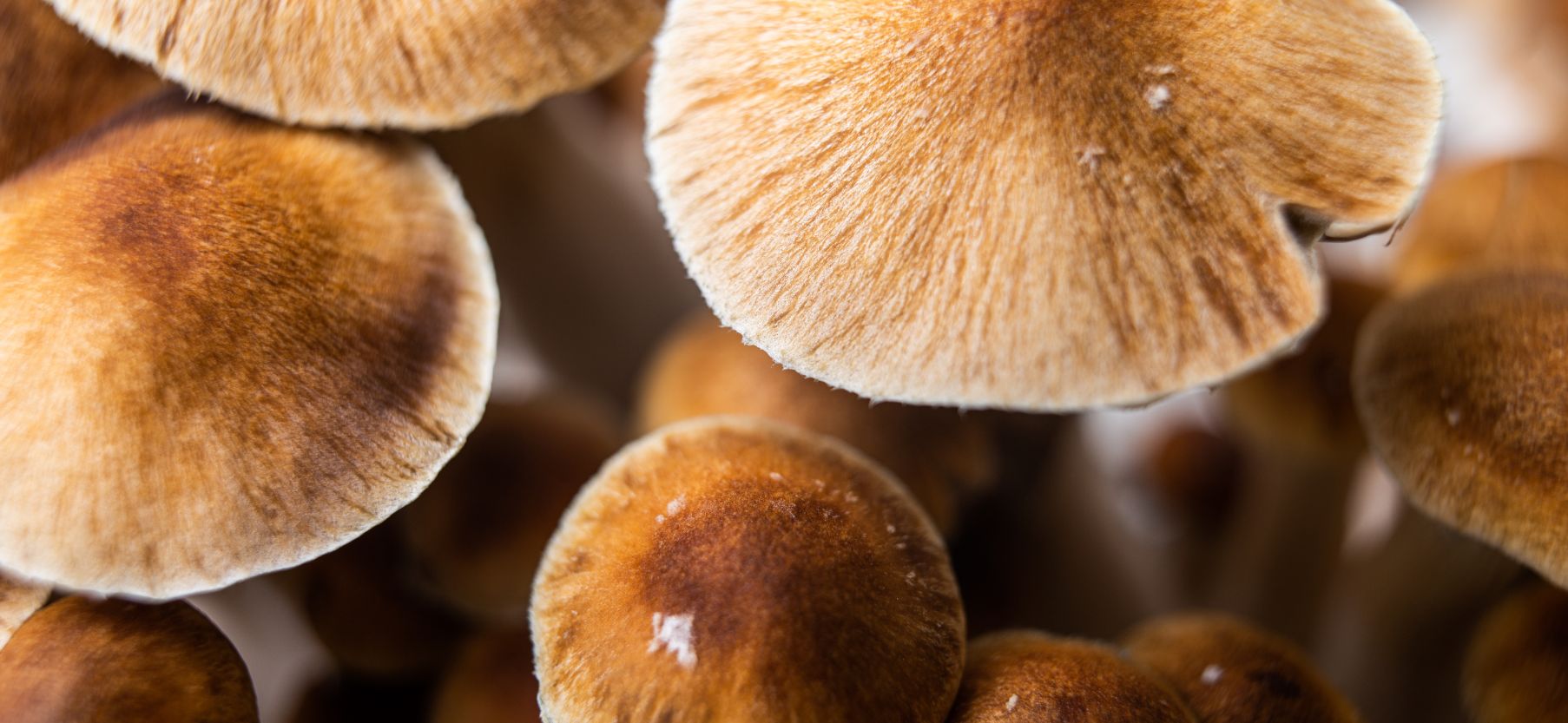Studying the Classics
Perhaps you’ve heard of the four “classical psychedelics”: Mescaline, a phenylethylamine found in Peyote, LSD, originally synthesized from an ergot fungus that afflicts rye, DMT, the mysterious “spirit molecule” that shows up in everything from Amazonian roots to toxic frog venom, and of course, psilocybin, the fungi-found tryptamine that metabolizes into a potent hallucinogenic when ingested.

These substances have achieved their marquee status based, largely, on long histories of study and usage. Psilocybin, DMT, and mescaline have all been used in traditional medicine and religious ritual for centuries, and LSD, while first synthesized in the relatively recent 20th century, played an enormous role in the countercultural revolutions of the 1960s.
Green Appeal
They also share in common their origins in the natural world. Psilocybin, DMT, and mescaline can all be absorbed by eating the raw plant matter in which they occur, and while LSD is a synthesized molecule it has its origin in a naturally occurring fungus (which is why it’s often pointed to as a potential explanation for the “paranormal” events of the Salem witch trials).
The fact that all these drugs come from the Earth has been a key selling point for activists and psychedelic advocates. When combating decades of politically-motivated misinformation, or the racialized prejudices of the War on Drugs, we can point to the long history these substances have interacting with humans to suggest they are not as dangerous as one might have been led to believe.

But their “naturalness” poses challenges to working with them, as well. Many psychedelic plants play important roles in traditional foodways and fragile ecologies, which overharvesting can disrupt. Researchers also face the challenge of separating the therapeutically positive aspects of these substances, like euphoria, emotional receptivity, and interconnectedness, from the negative ones (like nausea, or heightened impressionability). As the psychedelic renaissance stokes the expectations of advocates and investors alike, this has led to a race to create what we can call the first “contemporary” psychedelic: a molecule as potent and valuable as its classical predecessors, but tailored to the needs of the modern world.
Modern Molecules
Alexander Shulgin is likely the most important psychedelic researcher you’ve never heard of. A brilliant research chemist for Dow Chemical, he, along with his wife Ann, began creating synthetic psychedelics in the late 50s, eventually creating over 200 novel compounds, including a way of synthesizing MDMA which led to its popularization in North America.
One of Shulgin’s favorite synthetic psychedelics was 2C-B, a phenethylamine that variously been used as a psychiatric drug, an over-the-counter aphrodisiac, and a cheap substitute for Ecstasy. Shulgin returned to this compound and its derivatives many times, once calling it “one of the most graceful, erotic, sensual, introspective compounds [he] have ever invented.” He praised it for its euphoric and social qualities, and remarked that “for most people, it is a short-lived and comfortable psychedelic, with neither toxic side-effects nor next-day hang-over.”
While 2C-B remains a Schedule I and Schedule III drug in the United States and Canada respectively, meaning neither country acknowledges its therapeutic value, its perceived “gentleness” has made it popular with psychedelic therapists for use with patients and celebrities as unexpected as Kanye West.

Another common synthetic psychedelic is DPT (N,N-Dipropyltryptamine), a tweaked tryptamine that’s similar to psilocybin in effects but remains in a legal gray area. One of the companies working with the substance is Compass Pathways, a Peter Thiel-backed pharmaceutical company that has recently swatted down attempts to block it from patenting synthetic psilocybin. (Recently, a Canadian company called Mindset Pharma Inc. announced its own plans to go through with a psilocybin analogue based on DMT.)
Unnatural Selection
The promises of synthetic psychedelics are alluring: access to beneficial psychoactive experiences while retaining control over the duration, intensity, and after-effects. The possibility of creating new, more responsive laws rather than battling against years of calcified prejudice. But fortunes are being risked by the companies investing in these new compounds, which arguably leaves them less inclined to make decisions based on public interest rather than profit. The global patent system is baroque and predisposed to favor the elite, and there is more than enough reason to suspect the same forces will press upon psychedelics. Ultimately the debate that will be waged over the future of synthetic psychedelics will be similar to the ones we’re already having about our models of care: how can we reconcile a profit-based approach to medicine with the desire to provide access to healing to everyone that needs it? The answer will not appear in a miracle molecule, but in the sustained, interrogated effort of a community of the like-minded and the far-sighted.

